-

Sep
13
Interpretive Summary: Evaluation of sow thermal preference across three stages of reproduction

A paper recently published in the Journal of Animal Science evaluated whether different reproductive stages of sows altered thermal preference and if current recommendations required updating. It was hypothesized that the reproductive stage would alter thermal preference in sows. This study is the first to look at temperature preference differences based on the reproductive stage of sows.
Read more
-

Sep
13
Interpretive Summary: Detecting effective starting point of genomic selection by divergent trends from BLUP and ssGBLUP in pigs, beef cattle, and broilers

A paper recently published in the Journal of Animal Science aimed to find the start date of genomic selection for a set of economically important traits in pigs, Angus cattle, and broiler chickens by comparing trends obtained using best linear unbiased prediction and single-step genomic best linear unbiased prediction.
Read more
-

Sep
09
Interpretive Summary: Effects of guanidinoacetic acid supplementation on nitrogen retention and methionine flux in cattle
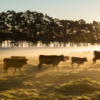
The research team from Kansas State University hypothesized that guanidinoacetic acid supplementation to Metdeficient cattle would induce a methyl group deficiency and that methionine supplementation would reduce the methyl group deficiency. Additionally, it was thought that guanidinoacetic acid might improve nitrogen retention when methionine was supplemented.
Read more
-

Sep
09
Interpretive Summary: The impact of direct-maternal genetic correlations on international beef cattle evaluations for Limousin weaning weight
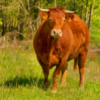
Maternally influenced traits include genetic factors that impact birth and weaning. Cultivating a better understanding of the heritability of maternally influenced traits may improve estimated breeding values (EBV), genetic selection and ultimately productivity.
Read more
-

Sep
09
Interpretive Summary: Piglet birth weight increases, and litter size decreases, with compensatory feeding of sows
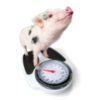
High backfat is not a desired trait in finisher pigs. Backfat thickness can vary depending on the season when piglets are born. Sows with high weight loss after summer lactation, for instance, yield smaller pigs with higher backfat thickness at harvest.
Read more
-

Sep
09
Interpretive Summary: Review: optimizing genomic selection for crossbred performance by model improvement and data collection
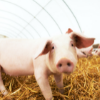
Crossbreeding enables breeders to capitalize on heterosis, which is the phenomenon of superior average performance of crossbreds compared with the average performance of their parental lines. Breeding programs aiming to improve the performance of crossbreds may benefit from genomic prediction of crossbred performance for purebred selection candidates.
Read more
-

Sep
09
Interpretive Summary: Wingless-type mouse mammary tumor virus integration site regulation of bovine theca cells
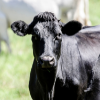
The results of the present study, outlined in the full paper, support the idea that the WNT signaling pathway is involved in the regulation of theca cell proliferation and steroidogenesis, but further research is required to explain the specific mechanisms of action and dose responses of WNT, Dickkopf, and secreted frizzled-related protein 4 and their relationship with other molecules during follicular growth. A better understanding of the role of WNT and their molecular mechanisms will allow for a greater perspective on how these signals impact follicular maturation and subsequent conditions that could lead to ovarian cysts.
Read more
-

Aug
30
Interpretive Summary: Addition of dietary methionine but not dietary taurine or methyl donors/receivers to grain-free diet increases postprandial homocysteine concentrations in adult dogs

Grain-free diets have been popular in the pet industry for over a decade; however, recently, they have been associated with canine dilated cardiomyopathy (DCM). Research has linked DCM with a deficient of taurine in cats, which may be a possible cause for DCM in large breed dogs. Methionine and cysteine, amino acid precursors to taurine synthesis in dogs, is very low in ingredients used to replace grains. To date, there has been no research evaluating the plasma and whole blood taurine concentration of dogs when feeding grain-free diets supplemented with nutrients involved in the biosynthesis of taurine.
Read more
-

Aug
30
Interpretive Summary: The impacts of xylanase on the fermentability and digestibility of high insoluble fiber diets in growing pigs
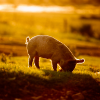
Adding coproducts to swine feed is an economical choice that can also adversely impact the digestibility of feed. Coproducts contain a higher amount of non-starch polysaccharides (NSP), which cannot be digested by pigs. Poorly digested feed leads to reduced performance, an undesired effect. Adding carbohydrase enzymes to feed may make NPS more digestible without negatively impacting performance.
Read more
-

Aug
30
Interpretive Summary: Effects of induced hindgut acidosis in growing pigs on growth, intestinal morphology and inflammation

Hindgut acidosis was induced by continuously infusing glucose (GLC) or casein (CAS) into the terminal ileum of growing pigs. Pigs were separated into three groups and given either an infusion of water (control), dextrose 50% (GLC) or casein sodium salt (CAS). Average daily feed intake was reduced in GLC and CAS pigs compared to the control.
Read more
-

Aug
30
Interpretive Summary: Thermoregulatory and physiological responses of nonpregnant, mid-gestation, and late-gestation sows exposed to incrementally increasing dry bulb temperature
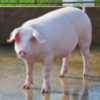
Results of the present study demonstrated that, when compared with mid-gestation and nonpregnant sows, late-gestation sows had increased respiration rate and altered blood characteristics in response to increasing dry bulb temperature, which can be indicative of greater heat stress sensitivity.
Read more
-

Aug
26
FARM Act Reintroduced

The Future of Agricultural Resiliency and Modernization Act (FARM Act), designed to help farmers more effectively fight climate change, has been reintroduced by Representative Josh Harder (D-CA), The FARM Act was first introduced by Harder in 2020 and referred to the Subcommittee on Conservation and Forestry.
Read more
-

Aug
26
New Lawsuit Against USDA Gene-Editing Approvals

In 2020, The United States Department of Agriculture (USDA) issued its final rule to modernize agricultural biotechnology regulations. The rule was revised to enable USDA’s Animal and Plant Health Inspection Service (APHIS) to regulate organisms developed using genetic engineering for plant pest risk with greater precision and reduces regulatory burden for developers of organisms that are unlikely to pose plant pest risks.
Read more
-

Aug
26
Tyson Foods Will Require Vaccinations for All Employees
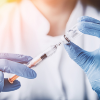
“It is abundantly clear that getting vaccinated is the single most effective thing we can do to protect ourselves, our families, and our communities,” CEO Donnie King said in a memo to employees. Tyson Foods is incentivizing workers with a $200 bonus to do so, on top of the already established policy of providing up to four hours of pay for getting vaccinated outside of work.
Read more
-

Aug
26
Study Finds Decline in American’s Confidence in US Institutions

This survey, which sampled over 1,380 adults living in all US states and the District of Columbia during the current survey set, began in 1973 during the Watergate scandal. Since 1993, Gallup has tracked 14 core institutions and the public’s confidence. During the last 15 years, confidence has remained below 36%. Before 2006, confidence was typically above 40%.
Read more
-

Aug
26
NASEM Establishes New Strategic Council

The NASEM are private, nonprofit institutions that provide independent, objective analysis and advice to the nation to resolve complications and inform public policy decisions related to science, technology, and medicine. They operate under an 1863 congressional charter to the National Academy of Sciences (NAS).
Read more
-

Aug
26
IPCC Releases Climate Report

The report addresses our physical understanding of the climate system and climate change, using the latest scientific advances and evidence from paleoclimate, observations, process understanding, global and regional climate simulations. This report also details how human influence has affected the climate over time.
Read more
-

Aug
26
Life Expectancy in the US Drops

"Life expectancy has been increasing gradually every year for the past several decades," Elizabeth Arias, a CDC researcher who worked on the report, told Reuters. "The decline between 2019 and 2020 was so large that it took us back to the levels we were in 2003. Sort of like we lost a decade."
Read more
-

Aug
26
Court Denies Challenges to California Prop 12

After the disappointing rejection from the U.S. Supreme Court, the U.S. Court of Appeals for the Ninth Circuit had denied the petition from the National Pork Producers Council (NPPC) and the American Farm Bureau Federation (AFBF) to rescind California’s Proposition 12 (Prop 12) as unconstitutional under the dormant Commerce Clause.
Read more
-

Aug
26
Groups Push for Massachusetts to Delay Animal Confinement Law

The National Pork Producers Council (NPPC) and the North American Meat Institute (NAMI) are advising Massachusetts to defer implementation of the Act to Prevent Cruelty to Farm Animals (the Act). With just five months until enforcement, NPPC and NAMI state that the Attorney General for the state is 19 months late in providing rules and regulations for the Act to farmers and producers.
Read more
 SepInterpretive Summary: Evaluation of sow thermal preference across three stages of reproduction
SepInterpretive Summary: Evaluation of sow thermal preference across three stages of reproduction A paper recently published in the Journal of Animal Science evaluated whether different reproductive stages of sows altered thermal preference and if current recommendations required updating. It was hypothesized that the reproductive stage would alter thermal preference in sows. This study is the first to look at temperature preference differences based on the reproductive stage of sows.
A paper recently published in the Journal of Animal Science evaluated whether different reproductive stages of sows altered thermal preference and if current recommendations required updating. It was hypothesized that the reproductive stage would alter thermal preference in sows. This study is the first to look at temperature preference differences based on the reproductive stage of sows. SepInterpretive Summary: Detecting effective starting point of genomic selection by divergent trends from BLUP and ssGBLUP in pigs, beef cattle, and broilers
SepInterpretive Summary: Detecting effective starting point of genomic selection by divergent trends from BLUP and ssGBLUP in pigs, beef cattle, and broilers A paper recently published in the Journal of Animal Science aimed to find the start date of genomic selection for a set of economically important traits in pigs, Angus cattle, and broiler chickens by comparing trends obtained using best linear unbiased prediction and single-step genomic best linear unbiased prediction.
A paper recently published in the Journal of Animal Science aimed to find the start date of genomic selection for a set of economically important traits in pigs, Angus cattle, and broiler chickens by comparing trends obtained using best linear unbiased prediction and single-step genomic best linear unbiased prediction. SepInterpretive Summary: Effects of guanidinoacetic acid supplementation on nitrogen retention and methionine flux in cattle
SepInterpretive Summary: Effects of guanidinoacetic acid supplementation on nitrogen retention and methionine flux in cattle The research team from Kansas State University hypothesized that guanidinoacetic acid supplementation to Metdeficient cattle would induce a methyl group deficiency and that methionine supplementation would reduce the methyl group deficiency. Additionally, it was thought that guanidinoacetic acid might improve nitrogen retention when methionine was supplemented.
The research team from Kansas State University hypothesized that guanidinoacetic acid supplementation to Metdeficient cattle would induce a methyl group deficiency and that methionine supplementation would reduce the methyl group deficiency. Additionally, it was thought that guanidinoacetic acid might improve nitrogen retention when methionine was supplemented. SepInterpretive Summary: The impact of direct-maternal genetic correlations on international beef cattle evaluations for Limousin weaning weight
SepInterpretive Summary: The impact of direct-maternal genetic correlations on international beef cattle evaluations for Limousin weaning weight Maternally influenced traits include genetic factors that impact birth and weaning. Cultivating a better understanding of the heritability of maternally influenced traits may improve estimated breeding values (EBV), genetic selection and ultimately productivity.
Maternally influenced traits include genetic factors that impact birth and weaning. Cultivating a better understanding of the heritability of maternally influenced traits may improve estimated breeding values (EBV), genetic selection and ultimately productivity. SepInterpretive Summary: Piglet birth weight increases, and litter size decreases, with compensatory feeding of sows
SepInterpretive Summary: Piglet birth weight increases, and litter size decreases, with compensatory feeding of sows High backfat is not a desired trait in finisher pigs. Backfat thickness can vary depending on the season when piglets are born. Sows with high weight loss after summer lactation, for instance, yield smaller pigs with higher backfat thickness at harvest.
High backfat is not a desired trait in finisher pigs. Backfat thickness can vary depending on the season when piglets are born. Sows with high weight loss after summer lactation, for instance, yield smaller pigs with higher backfat thickness at harvest. SepInterpretive Summary: Review: optimizing genomic selection for crossbred performance by model improvement and data collection
SepInterpretive Summary: Review: optimizing genomic selection for crossbred performance by model improvement and data collection Crossbreeding enables breeders to capitalize on heterosis, which is the phenomenon of superior average performance of crossbreds compared with the average performance of their parental lines. Breeding programs aiming to improve the performance of crossbreds may benefit from genomic prediction of crossbred performance for purebred selection candidates.
Crossbreeding enables breeders to capitalize on heterosis, which is the phenomenon of superior average performance of crossbreds compared with the average performance of their parental lines. Breeding programs aiming to improve the performance of crossbreds may benefit from genomic prediction of crossbred performance for purebred selection candidates. SepInterpretive Summary: Wingless-type mouse mammary tumor virus integration site regulation of bovine theca cells
SepInterpretive Summary: Wingless-type mouse mammary tumor virus integration site regulation of bovine theca cells The results of the present study, outlined in the full paper, support the idea that the WNT signaling pathway is involved in the regulation of theca cell proliferation and steroidogenesis, but further research is required to explain the specific mechanisms of action and dose responses of WNT, Dickkopf, and secreted frizzled-related protein 4 and their relationship with other molecules during follicular growth. A better understanding of the role of WNT and their molecular mechanisms will allow for a greater perspective on how these signals impact follicular maturation and subsequent conditions that could lead to ovarian cysts.
The results of the present study, outlined in the full paper, support the idea that the WNT signaling pathway is involved in the regulation of theca cell proliferation and steroidogenesis, but further research is required to explain the specific mechanisms of action and dose responses of WNT, Dickkopf, and secreted frizzled-related protein 4 and their relationship with other molecules during follicular growth. A better understanding of the role of WNT and their molecular mechanisms will allow for a greater perspective on how these signals impact follicular maturation and subsequent conditions that could lead to ovarian cysts. AugInterpretive Summary: Addition of dietary methionine but not dietary taurine or methyl donors/receivers to grain-free diet increases postprandial homocysteine concentrations in adult dogs
AugInterpretive Summary: Addition of dietary methionine but not dietary taurine or methyl donors/receivers to grain-free diet increases postprandial homocysteine concentrations in adult dogs Grain-free diets have been popular in the pet industry for over a decade; however, recently, they have been associated with canine dilated cardiomyopathy (DCM). Research has linked DCM with a deficient of taurine in cats, which may be a possible cause for DCM in large breed dogs. Methionine and cysteine, amino acid precursors to taurine synthesis in dogs, is very low in ingredients used to replace grains. To date, there has been no research evaluating the plasma and whole blood taurine concentration of dogs when feeding grain-free diets supplemented with nutrients involved in the biosynthesis of taurine.
Grain-free diets have been popular in the pet industry for over a decade; however, recently, they have been associated with canine dilated cardiomyopathy (DCM). Research has linked DCM with a deficient of taurine in cats, which may be a possible cause for DCM in large breed dogs. Methionine and cysteine, amino acid precursors to taurine synthesis in dogs, is very low in ingredients used to replace grains. To date, there has been no research evaluating the plasma and whole blood taurine concentration of dogs when feeding grain-free diets supplemented with nutrients involved in the biosynthesis of taurine. AugInterpretive Summary: The impacts of xylanase on the fermentability and digestibility of high insoluble fiber diets in growing pigs
AugInterpretive Summary: The impacts of xylanase on the fermentability and digestibility of high insoluble fiber diets in growing pigs Adding coproducts to swine feed is an economical choice that can also adversely impact the digestibility of feed. Coproducts contain a higher amount of non-starch polysaccharides (NSP), which cannot be digested by pigs. Poorly digested feed leads to reduced performance, an undesired effect. Adding carbohydrase enzymes to feed may make NPS more digestible without negatively impacting performance.
Adding coproducts to swine feed is an economical choice that can also adversely impact the digestibility of feed. Coproducts contain a higher amount of non-starch polysaccharides (NSP), which cannot be digested by pigs. Poorly digested feed leads to reduced performance, an undesired effect. Adding carbohydrase enzymes to feed may make NPS more digestible without negatively impacting performance. AugInterpretive Summary: Effects of induced hindgut acidosis in growing pigs on growth, intestinal morphology and inflammation
AugInterpretive Summary: Effects of induced hindgut acidosis in growing pigs on growth, intestinal morphology and inflammation Hindgut acidosis was induced by continuously infusing glucose (GLC) or casein (CAS) into the terminal ileum of growing pigs. Pigs were separated into three groups and given either an infusion of water (control), dextrose 50% (GLC) or casein sodium salt (CAS). Average daily feed intake was reduced in GLC and CAS pigs compared to the control.
Hindgut acidosis was induced by continuously infusing glucose (GLC) or casein (CAS) into the terminal ileum of growing pigs. Pigs were separated into three groups and given either an infusion of water (control), dextrose 50% (GLC) or casein sodium salt (CAS). Average daily feed intake was reduced in GLC and CAS pigs compared to the control. AugInterpretive Summary: Thermoregulatory and physiological responses of nonpregnant, mid-gestation, and late-gestation sows exposed to incrementally increasing dry bulb temperature
AugInterpretive Summary: Thermoregulatory and physiological responses of nonpregnant, mid-gestation, and late-gestation sows exposed to incrementally increasing dry bulb temperature Results of the present study demonstrated that, when compared with mid-gestation and nonpregnant sows, late-gestation sows had increased respiration rate and altered blood characteristics in response to increasing dry bulb temperature, which can be indicative of greater heat stress sensitivity.
Results of the present study demonstrated that, when compared with mid-gestation and nonpregnant sows, late-gestation sows had increased respiration rate and altered blood characteristics in response to increasing dry bulb temperature, which can be indicative of greater heat stress sensitivity. AugFARM Act Reintroduced
AugFARM Act Reintroduced The Future of Agricultural Resiliency and Modernization Act (FARM Act), designed to help farmers more effectively fight climate change, has been reintroduced by Representative Josh Harder (D-CA), The FARM Act was first introduced by Harder in 2020 and referred to the Subcommittee on Conservation and Forestry.
The Future of Agricultural Resiliency and Modernization Act (FARM Act), designed to help farmers more effectively fight climate change, has been reintroduced by Representative Josh Harder (D-CA), The FARM Act was first introduced by Harder in 2020 and referred to the Subcommittee on Conservation and Forestry. AugNew Lawsuit Against USDA Gene-Editing Approvals
AugNew Lawsuit Against USDA Gene-Editing Approvals In 2020, The United States Department of Agriculture (USDA) issued its final rule to modernize agricultural biotechnology regulations. The rule was revised to enable USDA’s Animal and Plant Health Inspection Service (APHIS) to regulate organisms developed using genetic engineering for plant pest risk with greater precision and reduces regulatory burden for developers of organisms that are unlikely to pose plant pest risks.
In 2020, The United States Department of Agriculture (USDA) issued its final rule to modernize agricultural biotechnology regulations. The rule was revised to enable USDA’s Animal and Plant Health Inspection Service (APHIS) to regulate organisms developed using genetic engineering for plant pest risk with greater precision and reduces regulatory burden for developers of organisms that are unlikely to pose plant pest risks. AugTyson Foods Will Require Vaccinations for All Employees
AugTyson Foods Will Require Vaccinations for All Employees “It is abundantly clear that getting vaccinated is the single most effective thing we can do to protect ourselves, our families, and our communities,” CEO Donnie King said in a memo to employees. Tyson Foods is incentivizing workers with a $200 bonus to do so, on top of the already established policy of providing up to four hours of pay for getting vaccinated outside of work.
“It is abundantly clear that getting vaccinated is the single most effective thing we can do to protect ourselves, our families, and our communities,” CEO Donnie King said in a memo to employees. Tyson Foods is incentivizing workers with a $200 bonus to do so, on top of the already established policy of providing up to four hours of pay for getting vaccinated outside of work. AugStudy Finds Decline in American’s Confidence in US Institutions
AugStudy Finds Decline in American’s Confidence in US Institutions This survey, which sampled over 1,380 adults living in all US states and the District of Columbia during the current survey set, began in 1973 during the Watergate scandal. Since 1993, Gallup has tracked 14 core institutions and the public’s confidence. During the last 15 years, confidence has remained below 36%. Before 2006, confidence was typically above 40%.
This survey, which sampled over 1,380 adults living in all US states and the District of Columbia during the current survey set, began in 1973 during the Watergate scandal. Since 1993, Gallup has tracked 14 core institutions and the public’s confidence. During the last 15 years, confidence has remained below 36%. Before 2006, confidence was typically above 40%. AugNASEM Establishes New Strategic Council
AugNASEM Establishes New Strategic Council The NASEM are private, nonprofit institutions that provide independent, objective analysis and advice to the nation to resolve complications and inform public policy decisions related to science, technology, and medicine. They operate under an 1863 congressional charter to the National Academy of Sciences (NAS).
The NASEM are private, nonprofit institutions that provide independent, objective analysis and advice to the nation to resolve complications and inform public policy decisions related to science, technology, and medicine. They operate under an 1863 congressional charter to the National Academy of Sciences (NAS). AugIPCC Releases Climate Report
AugIPCC Releases Climate Report The report addresses our physical understanding of the climate system and climate change, using the latest scientific advances and evidence from paleoclimate, observations, process understanding, global and regional climate simulations. This report also details how human influence has affected the climate over time.
The report addresses our physical understanding of the climate system and climate change, using the latest scientific advances and evidence from paleoclimate, observations, process understanding, global and regional climate simulations. This report also details how human influence has affected the climate over time. AugLife Expectancy in the US Drops
AugLife Expectancy in the US Drops "Life expectancy has been increasing gradually every year for the past several decades," Elizabeth Arias, a CDC researcher who worked on the report, told Reuters. "The decline between 2019 and 2020 was so large that it took us back to the levels we were in 2003. Sort of like we lost a decade."
"Life expectancy has been increasing gradually every year for the past several decades," Elizabeth Arias, a CDC researcher who worked on the report, told Reuters. "The decline between 2019 and 2020 was so large that it took us back to the levels we were in 2003. Sort of like we lost a decade." AugCourt Denies Challenges to California Prop 12
AugCourt Denies Challenges to California Prop 12 After the disappointing rejection from the U.S. Supreme Court, the U.S. Court of Appeals for the Ninth Circuit had denied the petition from the National Pork Producers Council (NPPC) and the American Farm Bureau Federation (AFBF) to rescind California’s Proposition 12 (Prop 12) as unconstitutional under the dormant Commerce Clause.
After the disappointing rejection from the U.S. Supreme Court, the U.S. Court of Appeals for the Ninth Circuit had denied the petition from the National Pork Producers Council (NPPC) and the American Farm Bureau Federation (AFBF) to rescind California’s Proposition 12 (Prop 12) as unconstitutional under the dormant Commerce Clause. AugGroups Push for Massachusetts to Delay Animal Confinement Law
AugGroups Push for Massachusetts to Delay Animal Confinement Law The National Pork Producers Council (NPPC) and the North American Meat Institute (NAMI) are advising Massachusetts to defer implementation of the Act to Prevent Cruelty to Farm Animals (the Act). With just five months until enforcement, NPPC and NAMI state that the Attorney General for the state is 19 months late in providing rules and regulations for the Act to farmers and producers.
The National Pork Producers Council (NPPC) and the North American Meat Institute (NAMI) are advising Massachusetts to defer implementation of the Act to Prevent Cruelty to Farm Animals (the Act). With just five months until enforcement, NPPC and NAMI state that the Attorney General for the state is 19 months late in providing rules and regulations for the Act to farmers and producers.



